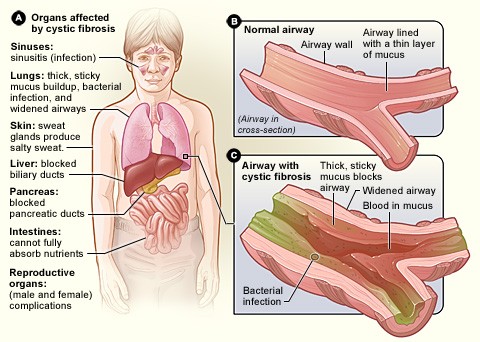Pseudomonas aeruginosa is a versatile and opportunistic bacterium that can cause infections in various parts of the body, particularly in individuals with weakened immune systems or underlying health conditions. Here’s an overview of the impact of Pseudomonas aeruginosa infections on human health:
1. Respiratory Infections:
- Common in: Individuals with cystic fibrosis, chronic obstructive pulmonary disease (COPD), and those on mechanical ventilation.
- Effects: Pseudomonas aeruginosa can cause chronic respiratory infections, leading to pneumonia and lung damage. In cystic fibrosis patients, the bacterium forms biofilms in the airways, making infections difficult to treat.

2. Urinary Tract Infections (UTIs):
- Common in: Catheterized patients, individuals with structural abnormalities in the urinary tract.
- Effects: Pseudomonas aeruginosa can cause UTIs, leading to symptoms such as painful urination, urgency, and potentially severe complications if the infection spreads to the kidneys.
3. Burn Wound Infections:
- Common in: Individuals with burn injuries.
- Effects: Pseudomonas aeruginosa is notorious for causing infections in burn wounds. It can impede the healing process and contribute to the development of sepsis, a potentially life-threatening condition.
4. Soft Tissue Infections:
- Common in: Immunocompromised individuals, those with diabetic foot ulcers.
- Effects: Skin and soft tissue infections caused by Pseudomonas aeruginosa can lead to cellulitis, abscess formation, and, in severe cases, systemic infections.
5. Bloodstream Infections (Bacteremia):
- Common in: Immunocompromised patients, individuals with indwelling catheters.
- Effects: Pseudomonas aeruginosa bloodstream infections can lead to sepsis, a serious condition with widespread inflammation and organ dysfunction. Mortality rates are higher in cases of Pseudomonas aeruginosa bacteremia.
6. Eye Infections:
- Common in: Contact lens wearers, individuals with eye injuries or surgeries.
- Effects: Pseudomonas aeruginosa can cause eye infections, including keratitis, which can lead to vision impairment or loss if not promptly treated.
7. Otitis Externa (Swimmer’s Ear):
- Common in: Individuals who swim frequently.
- Effects: Pseudomonas aeruginosa is a common cause of otitis externa, an infection of the external ear canal. It can lead to ear pain, inflammation, and discharge.
8. Antibiotic Resistance:
- Challenge: Pseudomonas aeruginosa is known for its intrinsic and acquired antibiotic resistance. This can make infections challenging to treat, especially in healthcare settings where multidrug-resistant strains are a concern.
9. Cystic Fibrosis Complications:
- Common in: Individuals with cystic fibrosis.
- Effects: Pseudomonas aeruginosa infections in cystic fibrosis patients contribute to lung damage and decline in respiratory function. Chronic infections may require long-term antibiotic treatments.
10. Environmental Resilience:
- Adaptation: Pseudomonas aeruginosa has the ability to adapt to diverse environments, including hospital settings. Its resilience and ability to form biofilms contribute to its persistence in medical equipment and surfaces.
Conclusion:
Pseudomonas aeruginosa infections pose significant challenges to human health, particularly in individuals with compromised immune systems or specific health conditions. The bacterium’s adaptability, biofilm formation, and antibiotic resistance underscore the importance of vigilant infection control measures, prompt treatment, and ongoing research efforts to address the impact of Pseudomonas aeruginosa on patient outcomes.











